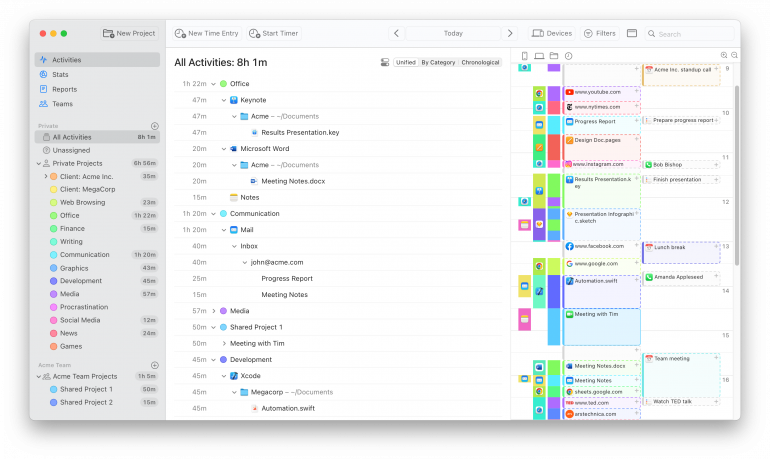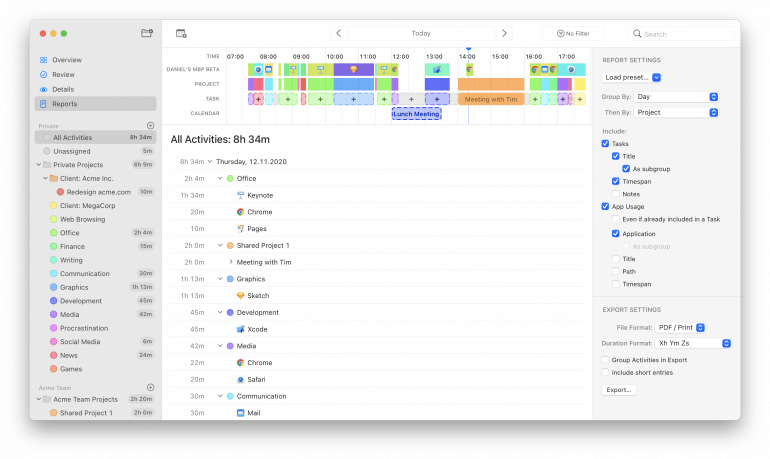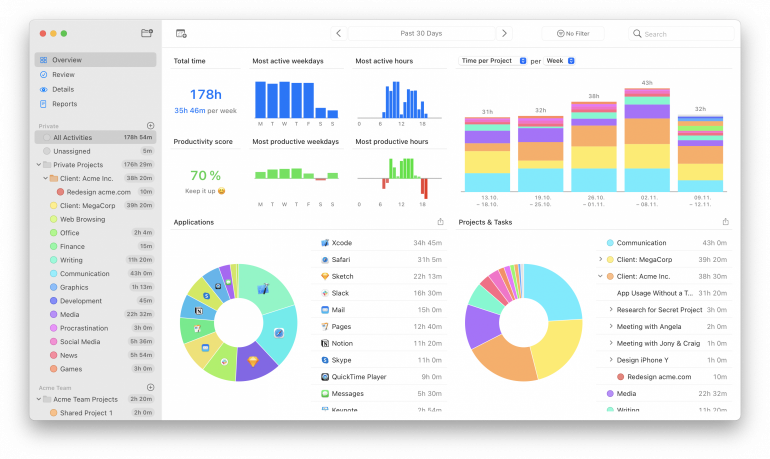Work Journal: What It Is and Why You Should Keep One

Image: Generated with Dall-E
A work journal is the secret one-two punch of time management tools. It can help you uncover inefficiencies, boost your productivity, and give you a data-driven blueprint for your career growth.
At its core, a work journal serves as your personal log for daily work activities, achievements, and observations.
But it’s more than just a list of tasks.
It’s a straightforward method to document your progress, reflect on your experiences, and spot opportunities you might otherwise miss.
Dedicating a little time to your work journal each day can become a powerful habit that can give you a leg up in your career.
With a variety of approaches to choose from, keeping a work journal is a flexible practice that can fit anyone’s style and work routine.
Table of Contents
The Differences Between a Work Diary and a Work Journal

Image: Lilartsy
Before we continue, it’s important to dive into the nuanced differences between the terms “work diary” and “work journal”.
On the surface, it sounds like it’s the same thing, but there are key differences in how you would use each one.
The following explanation is based on our perspective, acknowledging that others might interpret these terms differently. Their interchangeable use is common, often influenced by the nuances of different regions, social groups, or cultural practices.
What Is a Work Diary?
A work diary is a more reflective space.
It’s where you can pour in your thoughts, feelings, and reflections about the day’s events, challenges, and personal or work achievements.
It’s a wonderful tool to refer back to before job interviews, yearly reviews, and salary negotiations.
It gives you concrete examples to answer prompts like:
- Tell me about a time when you made a mistake or failed.
- Tell me about a time when you led a team at work.
- Tell me about a time you reached a goal.
It helps you unpack the “why” and “how” of your work experiences and provides a blueprint to understand your professional growth and emotional journey.
A work diary can also include a notebook section listing your tasks and schedule for the day.
What Is a Work Journal?
On the flip side, a work journal leans towards a more structured, “logbook” style approach and is similar to the daily schedule use case of a work diary.
Here, you focus on the concrete details like:
- What tasks did you accomplish?
- How long did it take?
- What do you need to tackle next?
- Where are your biggest time wasters?
It’s a more objective record, aiming to track your productivity and identify patterns in your work habits over time.
Choosing between the two depends on what you aim to achieve.
Is your goal introspection and emotional processing? A work diary might suit you better.
Do you want to optimize your productivity and have a clear record of your accomplishments? A work journal would be more beneficial.
Both tools, however, share the ultimate goal of enhancing your work life through careful documentation and reflection.
The Benefits of Keeping a Work Journal

Image: Dylan Ferreira
Embracing the habit of keeping a work journal comes with benefits that extend far beyond the organization of your daily tasks.
Here’s how it can improve your professional life.
Boost Your Productivity
You know those days when you open your laptop at 9am, blink, and suddenly it’s 6pm?
Keeping a work journal can help you see what you did with those 40+ hours each week and identify patterns in your performance.
You’ll log the tasks you accomplish and understand when and under what circumstances you do your best work.
Maybe your creativity peaks in the mornings, or your focus improves after a midday workout.
Your work journal can help you pinpoint these productive periods and shine a light on time sinks—those activities that devour your time without contributing much to your goals.
Recognizing these can help you adjust your schedule and habits, optimizing your time management for maximum efficiency.
Improve Your Focus and Stop Procrastinating
Distractions are everywhere.
Whether it’s Slack notifications, someone coming up to your desk, urgent emails, or the temptation to doom scroll on social media, it can feel like a challenge to maintain focus on priority tasks.
A work journal can guide you back to what’s most important.
By recording, reviewing, and applying selective criteria for what is essential, you create a physical reminder of your priorities, which helps keep your attention on the projects that matter most.
It also works particularly well if you have ADHD and are struggling with time management.
According to one Reddit user with ADHD, using a work journal helps him stay focused on the task at hand, maintain engagement, and avoid procrastinating on challenging assignments.
Focusing on the right tasks inevitably leads to better quality work and productivity as you’re less likely to get caught up in the day-to-day.
Take Accountability and Track Your Progress
Beyond tracking tasks and time, a work journal is a tool that encourages deeper insight into your work habits, challenges, and successes.
Logging your work activities serves as a progress tracker and a tangible record of your accomplishments. It gives you the opportunity to experience a sense of progress with meaningful work, driving productivity and motivating you to keep pushing forward.
With a daily work journal full of the projects you’ve worked on, you can use the data to motivate future career growth. Whether it’s illustrating the times you went above and beyond, meetings you’ve organized, or the time you’ve invested in training team members.
It cuts your preparation for quarterly or yearly reviews in half and backs up your claims with facts.
That’s not all.
Your work journal also highlights areas of improvement. You can see exactly where you’re falling short and prompt yourself to set up specific goals to avoid bad habits or upskill yourself.
Read more: Time Efficiency – How to Get It Right
The Different Ways You Can Keep a Work Journal

Image: Generated with Dall-E
Are you more of a pen-to-paper person? Or do you like keeping everything only a finger tap away?
No matter your preference and work style, there are plenty of options for keeping a work journal.
Traditional Paper Journal
There’s something timeless about the tactile experience of writing in a traditional paper journal. The act of handwriting can be meditative and helps some people process their thoughts more deeply.
It encourages you to slow down, reflect on your day, and engage in a more personal, introspective examination of your work activities and achievements.
Beyond the psychological benefits, a paper journal doesn’t require battery power or internet connectivity. However, it does take up more space (especially when your journals start piling up), and you lose the ability to search for a keyword or a specific entry.
Digital Tools and Apps
Digital work journals offer convenience, efficiency, and features that paper journals can’t match.
With apps and tools, you can:
- Easily search past entries
- Tag and categorize your notes
- Access your journal from anywhere
- Rely on automatic time tracking
All of this works together to create more accurate diary entries and help you save time.
Hybrid Approaches
A hybrid approach combines the best of both worlds, allowing you to enjoy the tactile benefits of handwriting and the convenience of digital tools.
You might jot down quick notes or sketch ideas in a paper journal and use time-tracking tools to give you a more accurate idea of where your time is going rather than relying on your memory.
At the end of the workday, you can transfer your notes to your digital journey and still benefit from the efficiency of tagging and categorizing your entries.
How Timing Can Enhance Your Work Journal Experience
Timing is an automatic time-tracking app for Mac users. With no “start and stop” timers, you never have to worry about inaccurate timesheets again.

The software automatically records which apps, documents, and websites you use and precisely captures where your time goes without manual input.
Here’s how it can help remove the guesswork from your work journal, save you time and give you instant feedback on where you’re spending your time.
Automatic Activity Logging
With Timing automatically working in the background, you only need to focus on your to-do list.
It captures every minute of your workday, including the screen time on your iPhone and automatic call tracking to make sure you don’t miss anything. You’ll have a complete picture of your day without constantly disrupting your workflow to make notes.
With smart categorization rules, Timing seamlessly organizes your entries into the right project, and the intelligent block suggestions further streamline your entry process and save you time.
Integration with Work Journals
At the end of the day, week, or month, you can pull a report and see exactly where your time went, how many hours you spent on specific projects, your most productive hours, and which websites or apps are draining your efficiency.
The detailed reports generated by Timing are an indispensable tool for enriching your work journal entries.

By offering precise data on how you spend your time, these reports give you objective insights to your reflections. Your journal becomes a record of what you did and a tool for analyzing how effectively you’re working.
Streamlining the Reflection Process
With all this automatic information and Timing’s Stats screen, you have a powerful tool to help spot trends and patterns in your work habits over time.
The result?
A valuable reflection process for your work journal.

You can identify which strategies enhance your productivity and which habits detract from it.
In essence, Timing acts as a catalyst for a more informed and insightful work journaling practice. It automates the time-logging process, saving you time and giving you data-driven insights into your work habits.
Read more: How to Use Timing to Improve Your Time Management Skills
5 Tips on Turning Your Work Journal into an Automatic Habit

Image: Isaac Smith
Embarking on the journey of keeping a work journal can be both exciting and daunting.
However, with the right steps and tips, it can become a seamless part of your daily routine.
Here’s how you can make the most of this practice:
Set SMART Goals
Start by defining clear, actionable goals for what you want to achieve with your work journal.
- Are you looking to improve time management, track progress on specific projects, or gain insights into your work patterns?
- Do you have macro and micro goals you want to achieve?
- Are you looking to use your entries to justify a pay raise or a promotion?
Making an effort to set intentional and specific SMART objectives will guide your entries and ensure your journaling efforts align with your professional aspirations.
Read more: Effective Goal Setting for Time Management Success
Make Your Work Journal a Non-Negotiable
Like any habit, consistency is key.
It helps you develop discipline, auto control, accountability, and a higher sense of self-trust.
The more your work journal becomes a non-negotiable part of your daily routine, the more data you’ll have for a comprehensive picture of your work life and which areas need improvement.
Read more: Boost Your Freelance Career: 12 Habits of Highly Effective Freelancers
Your Success Is in the Details
It’s tempting to write a quick work diary entry and call it a day. However, it’s going to be to your detriment in the future.
The real value in your entries lies in the details.
Get specific on your accomplishments, duration of tasks, the challenges you faced, and any insights or ideas that came up during the day.
This level of detail turns your journal into a rich resource for annual reviews, what strategies work best for you and where there’s room for growth.
Use Timing for Data-Driven Work Diary Entries
Human memories are naturally unreliable, according to scientists. Memory bias is a cognitive bias that impairs our ability to recall information by altering the content of what we remember.
What does this mean?
Our memories are reconstructed during recall, making them prone to manipulation and errors.
Your cognitive bias might “remember” you spending an hour on a project when, in reality, you only spent 30 minutes. You didn’t account for interruptions or distractions.
Timing automatically records where your time is going, helping you avoid the problem of memory bias and only adding objective data to your journal entries.
With less time spent on basic record-keeping, you have more time to focus your journaling on analysis and reflection.
Review and Reflect
Make it a routine to review your journal entries regularly—be it weekly or monthly.
The review process is crucial for identifying patterns, assessing progress towards your goals, and adjusting your work habits.
With Timing’s detailed reports, you can quickly see trends in your time management, where your time sinks are hiding, and your time efficiency for each project.
Charting Your Professional Growth with Timing
The practice of maintaining a work journal is an effective strategy for improving your performance.
Through diligently recording your daily activities, accomplishments, and reflections, you gain invaluable insights into your work habits, productivity patterns, and areas for growth.
It boosts your efficiency and fosters a deeper connection to your career journey, helping you to navigate challenges with greater clarity and purpose.
Ready to start reaping the benefits of a work journal?
Start your free 30-day trial with Timing today. Save time and use a data-driven approach to take your professional journey to the next level.
Work Journal: Frequently Asked Questions
What Is a Work Journal?
A work journal is a dedicated notebook or digital platform where you can record your daily work activities, accomplishments, observations, and reflections. It is a personal logbook to track progress, identify challenges, and document your insights during the workday.
Why Should I Keep a Work Journal?
You should keep a work journal if your goal is to improve your productivity, focus, and career growth. It helps identify productive patterns, prioritize tasks, and maintain accountability for your progress.
How Do I Create a Daily Work Journal?
To create a daily work journal, choose a format that suits you best. For example, a traditional paper journal, a digital tool, or a hybrid approach. Set clear goals for what you want to achieve, like time-tracking tasks or reflecting on challenges. Make regular entries detailing your daily work activities and accomplishments, and use tools like Timing to save you time and enrich your entries with accurate data.
